Source/Central Park map from 1860
Origins of Central Park
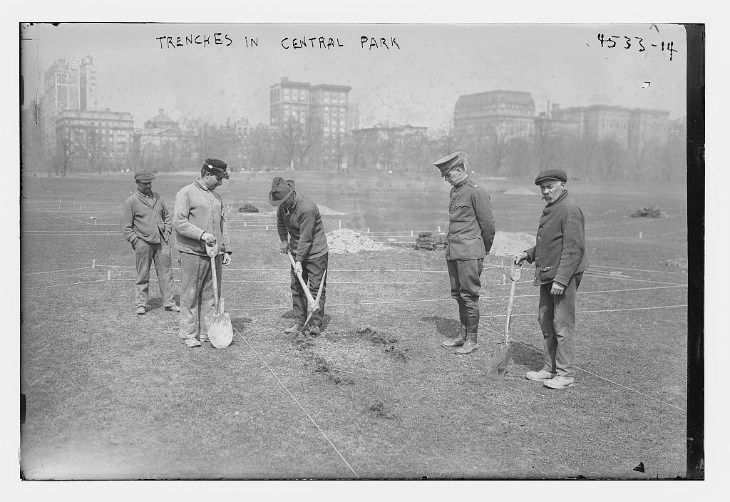 Source/Digging trenches, c.1915
Source/Digging trenches, c.1915
Planning for the park began in the 1850s. The idea was conceived in the fevered minds of the aristocratic residents of New York City. These were mainly landowners and wealthy city dwellers who were influenced and inspired by such large capitals as London and Paris, which had a central large park to their name. The situation back then in New York was dire: in the 1840s the city was so crowded, people were holding picnics in cemeteries, in absence of an alternative.
At the time there was a small community and several other dwellings in the area of today's Central Park. Exactly two weeks after all 1,600 dwellers left their homes, the Board of Commissioners of Central Park put out a declaration inviting people to send their suggestions to the Park's design. Frederick Law Olmsted and Calvert Vaux's "Greensward plan" had won.
Source
Greensward plan
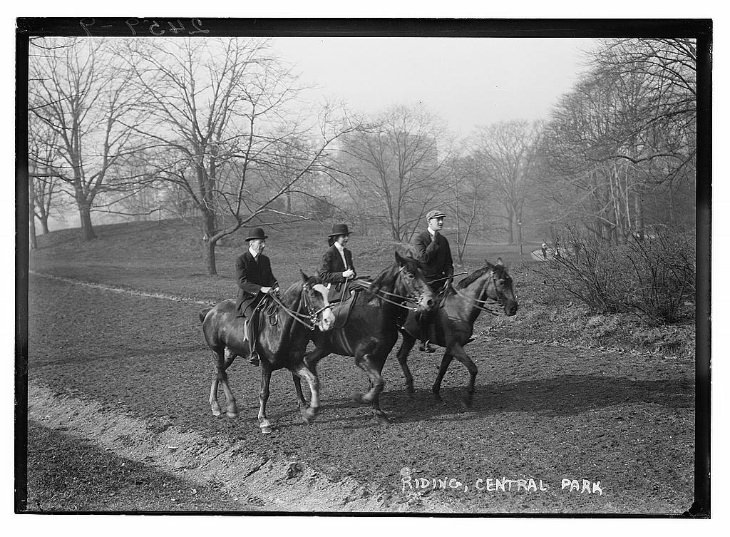 Source/Horse riding c.1910
Source/Horse riding c.1910
Olmstead and Vaux's Park design stretches over 843 acres of land. They put great effort into paving meandering paths that would break the grid pattern of the city. There were paths wide enough for carriages (who were frequent vehicles in the park at the time) and separate safe trails for walkers.
The board specifications for what must be included in the park were as follows:
- There must be a minimum of four cross streets connecting Fifth and Eighth avenues.
- A parade ground for military drills (today's Sheep Meadow)
- The park must include three playgrounds, sites for exhibitions and concerts, a flower garden, a skating lake, a fountain and a lookout.
Olmstead and Vaux wanted the park to exhibit democracy in such a way that every class could come and enjoy the park equally. They wanted it to be a place where all classes can admire the scenery, exercise a healthy active lifestyle, and socialize.
Source
The beginning was everything but smooth
A total of 1,600 residents were permanently evacuated from their homes when authorities were carving out the land for the Park. Among those, were the 225 residents of Seneca Village. This was the largest community living near Central Park's destined area, and it mostly comprised of free African Americans who were property owners. It was founded in 1825 by free working-class African-Americans in uptown Manhattan when slavery was still legal in New York.
The community had three churches, two schools, and three cemeteries. They held 10% of Black voting power in New York and lived alongside Irish and German immigrants. In 1853, the New York legislator picked his spot for the park, overlapping the homes of 1,600 residents, Seneca village included. He authorized the taking of the land by eminent domain and set a budget of 5$ million to buy that land. Just three years later the villagers received a final notice before evacuation and were finally forcefully extracted from their homes by police forces in 1857.
The media coverage did not favor the villagers and had portrayed them as squatters. The entire working class, Seneca village population among them, weren't able to visit the park as it was too up north to easily reach. Daytime concerts were usually held on Saturdays when they were still working. After a playground was installed in the 1920s, the park finally became a family destination as well.
Source, source
The first days
 Source/c.1900
Source/c.1900
The park first opened for public use in the winter of 1859. At the time, the main activities in the park were skating in the winter and Saturday concerts in summer. Over time more and more features were added to the Park, including the famous carousel, skating rinks, a menagerie (that later became the zoo), baseball and soccer fields, and more. But as mentioned previously, in the first decade, due to the park's location, many of its visitors were of the middle to high classes in New York, more than half of them arriving in costly carriages.
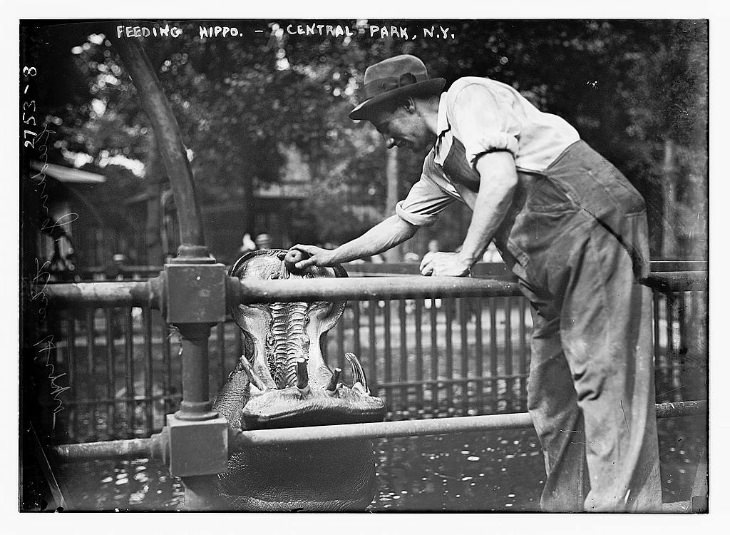 Source
Source/
Feeding a hippo, c.1910Additionally, some particular rules somehow inhibited the Park's full potential:
- No group picnics were allowed. This kept away many of the Irish and German residents.
- No commercial wagons were allowed, even for personal use. This kept small merchants, who only had their commercial vehicles, from entering the Park.
- Only school boys with a note from their principal could play ball in the meadows.
Source
Bite-size facts for the modern visitor
Got lost in Park? Let the lamps help you
There is a little known fact about the nature of the lamps all around Central Park. There are 1,600 cast-iron lamps, each carrying four digits. If you know how to decipher those, they can tell you where you are in relation to the city streets. The first two digits tell you the nearest street, and the second two tell you if you're closer to the east or west side. Even numbers signal east while odd ones signal west.
Source
Central Park's hidden magic garden
Much of the Park's pleasant appearance is thanks to the efforts of the non-profit Central Park Conservancy. Is it thanks to them that a particularly beautiful area of the park re-opened back in 2016, that not many know of.
We're talking about the Hallet Nature Sanctuary that has been, until its reopening in 2016, closed since the 1930s. It is one of two permanently fenced-off areas in the park, located on the East Side from 60th-62nd Streets, south of the Wollman Rink. Before it was closed down this part of the park was declared a bird sanctuary, but due to years of neglect, nature took over the area. Did you know that Central Park serves as a stopover on the Atlantic Flyway for over 200 species of birds?
Today the Sanctuary is open only at certain hours, you can check those by clicking here. It is one of the most magical areas of the park. Still not sure it's worth a visit? Try a video tour first:
The Park's mystery cave
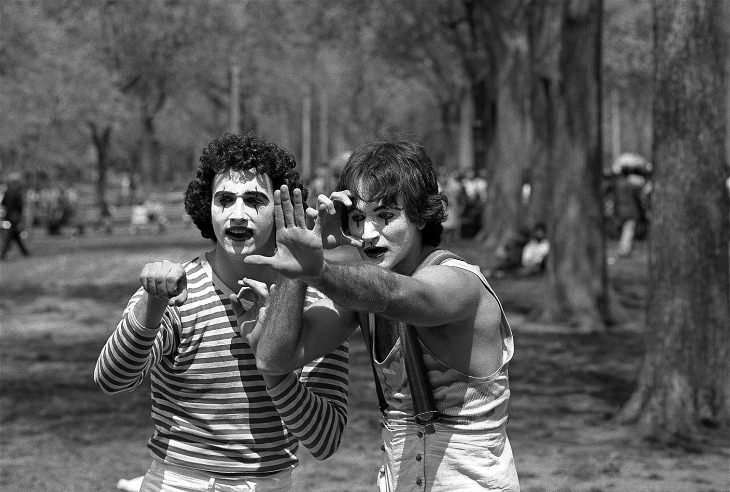 Source/Robin Williams (right) shot by Daniel Sorine, 1974
Source/Robin Williams (right) shot by Daniel Sorine, 1974
Central Park was planned and constructed to feel like a naturally occurring landscape. That was hardly the case, though. 20,000 workers labored night and day, spreading nearly 3 million cubic yards of topsoil imported from New Jersey and planting over 270,000 trees and shrubs. There were marshlands to be dried and boulders to be removed. Those, by the way, were exploded away using gun powder. More gun powder was used in the excavation of Central Park than in the Battle of Gettysburg.
In their excavations and labor to give the Park a natural look, the workmen had discovered a truly natural wonder in the shape of a narrow cave. They were working meticulously to help it blend in with the park, arranging rocks around it and setting flat stones as steps. The man-made lake was made so that you could boat to the cave as well.
At first, the cave was a big hit with children and adults alike, but soon it became a haven for more sinister, violent activity, and authorities sealed it off for good in the 1920s. If you have a knack for adventure you can still see the steps that led to it on the East Side of the Ramble Stone Arch.
Source
Where have all the sheep gone?
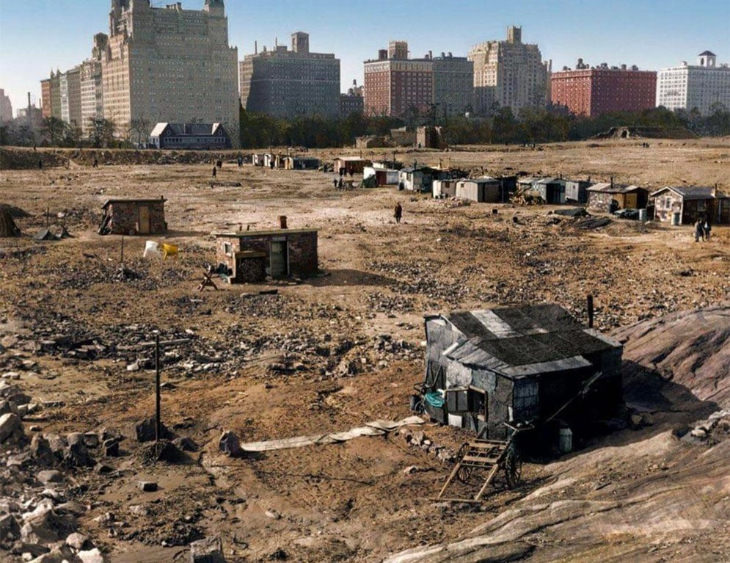 Source
Source/
Central Park during the Great Depression, 1933There were once sheep in Sheep Meadow, and the reason they're gone is as grim as only the past can get. The reserve was home to about 200 sheep for about 70 years. They had a shepherd and a barn where they would sleep. People weren't allowed into the meadow but they were welcome to watch from afar or visit the sheep in the barn.
At first, the sheep were moved to Prospect Park in Brooklyn, but during the Great Depression, they were moved away to the mountains, as authorities feared the hungry people would hunt them. Eerie!
Source
The Carousel
One of the most beloved attractions in Central Park, the carousel, wasn't so welcome when it first opened. The park commissioners didn't want any commercial enterprises in the Park. But when they saw the great revenue this carousel yields they were convinced. The first carousel, which operated until 1924, was powered by a mule walking in a hidden compartment underground. It would start and stop at the tap of a foot by the operator above ground.
The next two carousels were both operated by steam and both went down in a fire. The current carousel is over a century old. Some history!
Source
Cover photo source


 Source/Digging trenches, c.1915
Source/Digging trenches, c.1915 Source/Horse riding c.1910
Source/Horse riding c.1910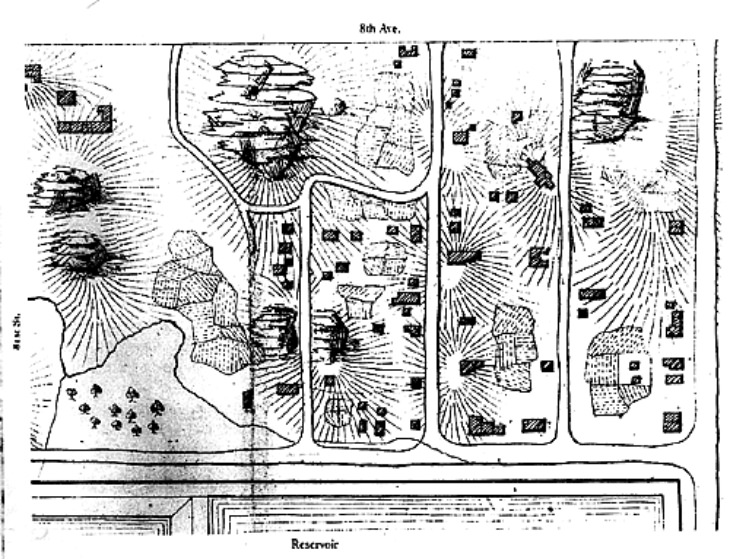 Source/Map of Seneca Village
Source/Map of Seneca Village Source/c.1900
Source/c.1900 Source/Feeding a hippo, c.1910
Source/Feeding a hippo, c.1910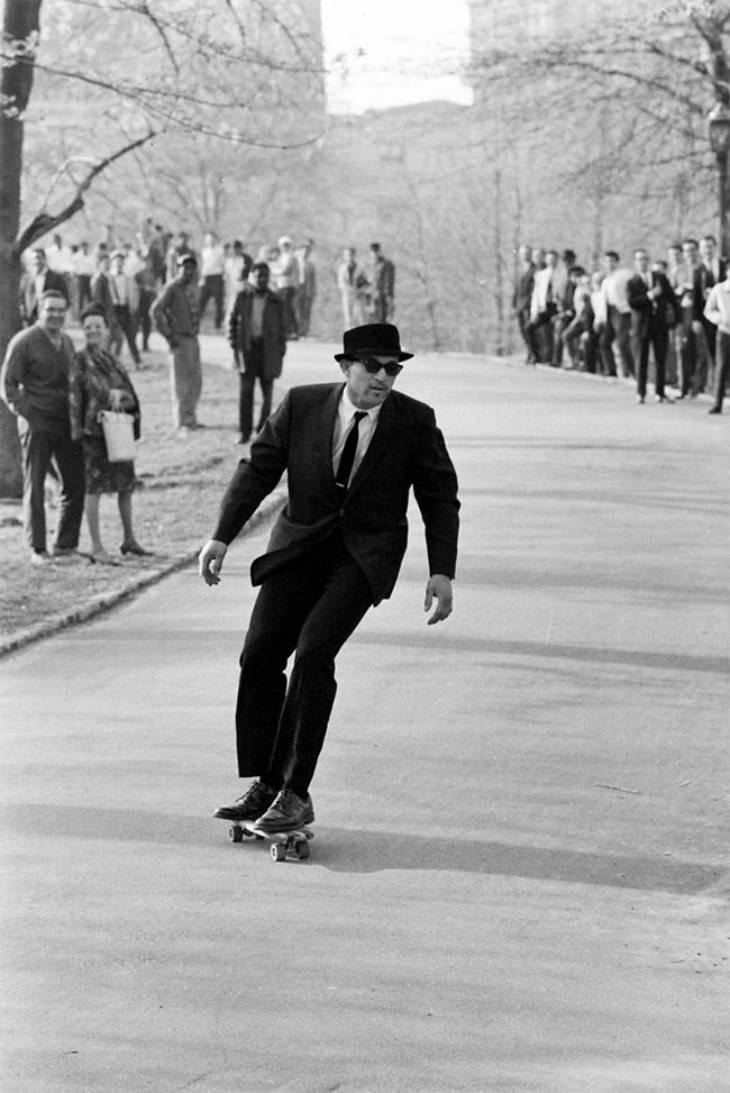 Source/1965
Source/1965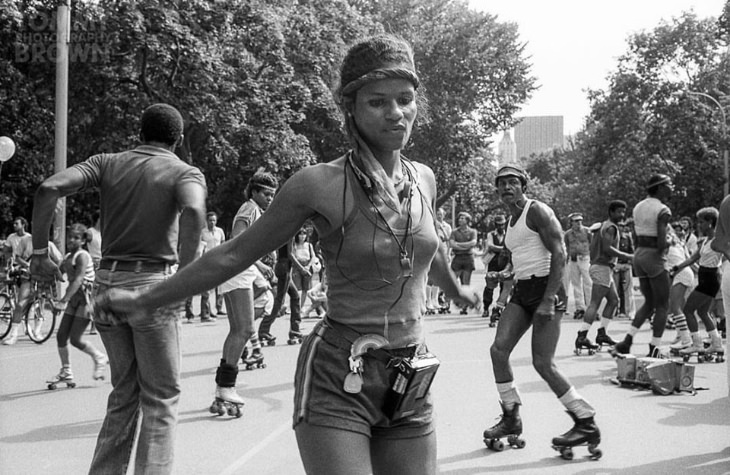 Source/1982
Source/1982 Source/Robin Williams (right) shot by Daniel Sorine, 1974
Source/Robin Williams (right) shot by Daniel Sorine, 1974 Source/Central Park during the Great Depression, 1933
Source/Central Park during the Great Depression, 1933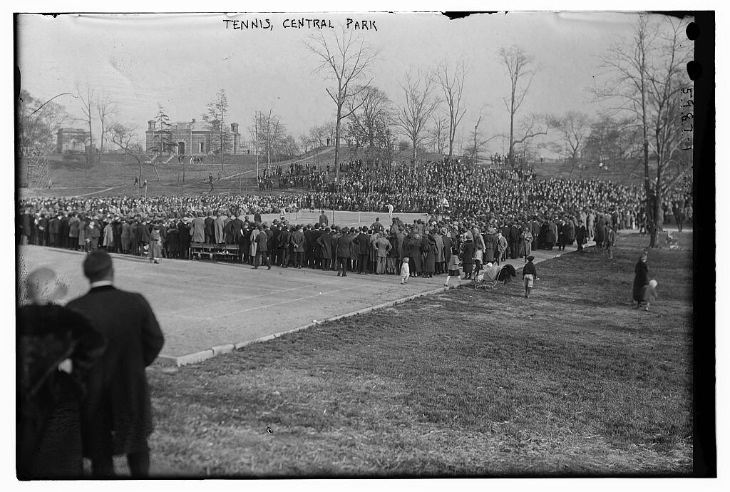 Source/Tenis game circa 1920
Source/Tenis game circa 1920